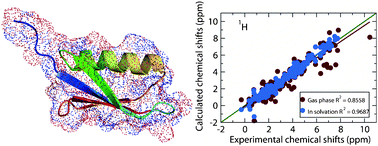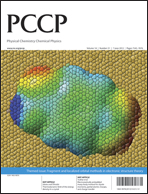Fragment density functional theory calculation of NMR chemical shifts for proteins with implicit solvation†
Abstract
Fragment density functional theory (DFT) calculation of

- This article is part of the themed collection: Fragment and localized orbital methods in electronic structure theory

 Please wait while we load your content...
Please wait while we load your content...